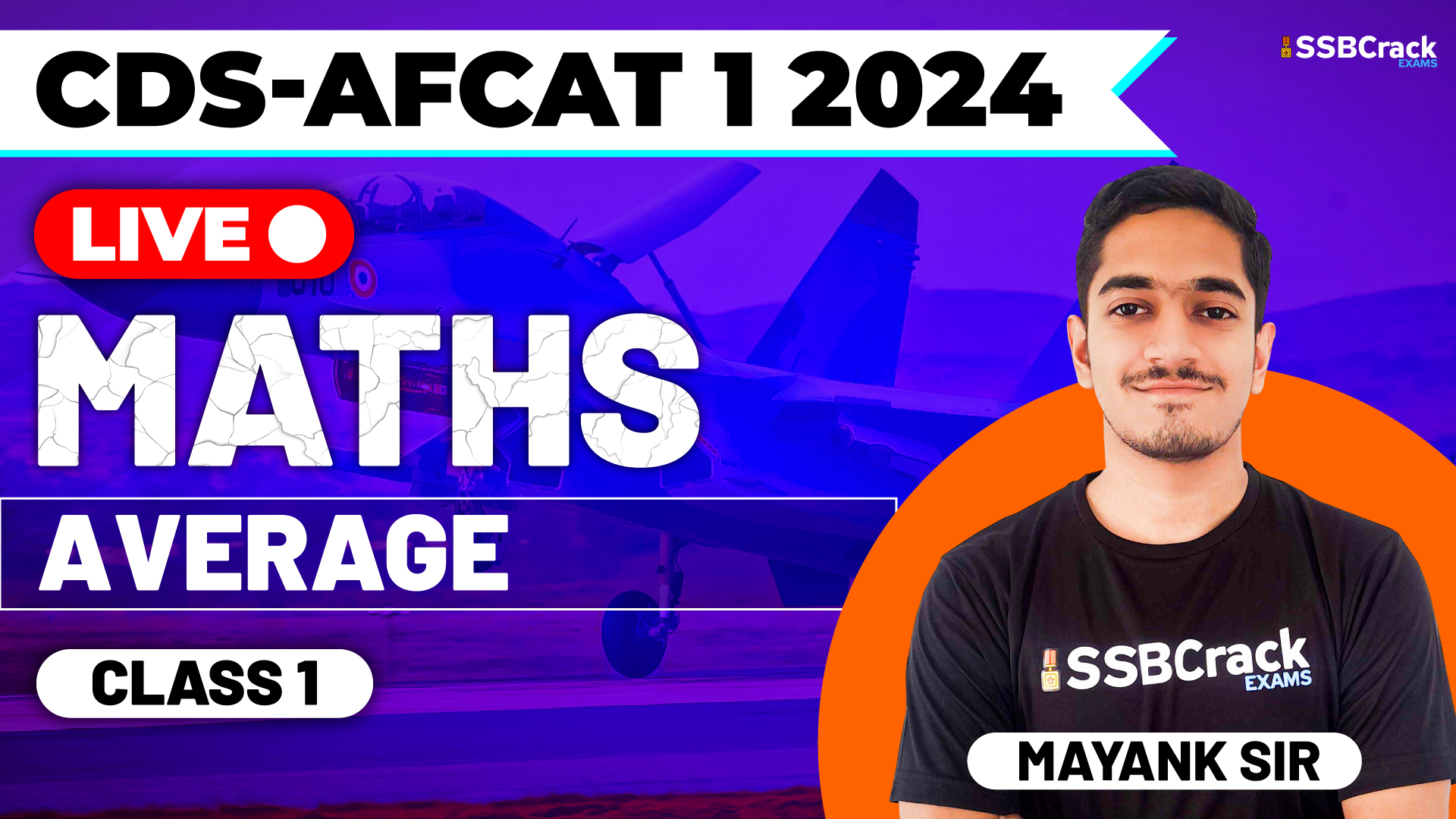Competitive exams like the CDS (Combined Defence Services) and AFCAT (Air Force Common Admission Test) require not only theoretical knowledge but also practical problem-solving skills. One essential mathematical concept that plays a crucial role in these exams is “Averages.” In your recent practice question class, you ventured into the world of averages, tackling a variety of problems to sharpen your problem-solving skills. This blog will provide you with an overview of the key insights and takeaways from your practice class, emphasizing the importance of mastering averages for CDS and AFCAT exam success.
The Essence of Averages: Foundation and Formulas
Before diving into the intricacies of average problems, let’s revisit the fundamental concept of averages.
Average Formula:
The average of a set of numbers is calculated by summing all the numbers in the set and dividing by the total count of numbers.
Average = Sum of Numbers / Total Count of Numbers
This formula forms the basis for solving a wide range of average-related problems.
Key Insights from Your Practice Class
- Efficiency in Problem Solving: Your practice class equipped you with essential formulae and problem-solving techniques that streamline the process of solving average-related questions. This efficiency is invaluable in time-sensitive competitive exams.
- Real-World Application: Understanding averages isn’t just essential for exams; it has practical applications in various real-life scenarios, including sports statistics, financial analysis, and data interpretation.
Practical Problem-Solving: Enhancing Your Skills
In your practice class, you encountered a variety of practical average problems that tested your ability to apply the average formula to real-world situations. These questions covered a broad spectrum of scenarios, including test scores, ages of individuals, and quantities of items. The more you practice such questions, the more proficient you become in handling different types of average-related problems.
Weighted Averages: A Step Beyond
In your practice class, you might have also explored the concept of weighted averages. Weighted averages take into account the significance or weight assigned to different values when calculating the average.
Weighted Average = (Sum of (Value × Weight)) / Total Weight
This concept is particularly useful in scenarios where not all values have equal importance.
Why Averages Matter
- Data Interpretation: Averages play a crucial role in interpreting and analyzing data, which is essential in various military and air force operations.
- Resource Allocation: Mastery of averages is vital for efficient resource allocation, whether it’s about distributing supplies or planning troop deployments.
- Time Management: In competitive exams, time is limited. Proficiency in average-related problems allows you to allocate your time wisely to different sections of the exam.
Conclusion
Your practice question class on averages in CDS and AFCAT preparation has equipped you with valuable problem-solving skills. Embrace these tools as your allies on your journey to success. As you continue your studies and practice, you’ll find that these techniques become second nature, enabling you to conquer average-related questions with ease on the day of the exam. So, keep practicing, stay focused, and remember that mastering the fundamentals is the key to excelling in the exams and in real-world scenarios where averages are vital. With dedication and practice, you are well on your way to achieving success in the CDS and AFCAT exams. Good luck!



















